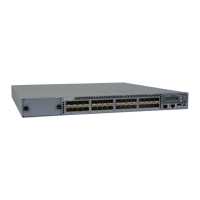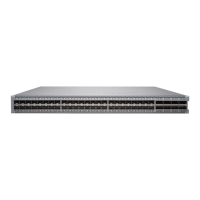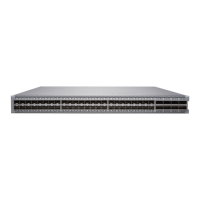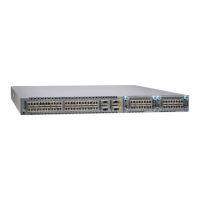LASER WARNING: Do not look directly into a ber-opc transceiver or into the ends
of ber-opc cables. Fiber-opc transceivers and ber-opc cables connected to
transceivers emit laser light that can damage your eyes.
2. Carefully unplug the ber-opc cable connector from the transceiver.
3. Cover the transceiver with a rubber safety cap.
LASER WARNING: Do not leave a ber-opc transceiver uncovered except when
inserng or removing a cable. The rubber safety cap keeps the port clean and protects
your eyes from accidental exposure to laser light.
4. Cover the ber-opc cable connector with the rubber safety cap.
How to Handle Fiber-Opc Cables
Fiber-opc cables connect to opcal transceivers that are installed in Juniper Networks devices.
Follow these guidelines when handling ber-opc cables:
• When you unplug a ber-opc cable from a transceiver, place rubber safety caps over the transceiver
and on the end of the cable.
• Anchor ber-opc cables to prevent stress on the connectors. When aaching a ber-opc cable to
a transceiver, be sure to secure the ber-opc cable so that it does not support its own weight as it
hangs to the oor. Never let a ber-opc cable hang free from the connector.
• Avoid bending ber-opc cables beyond their minimum bend radius. Bending ber-opc cables into
arcs smaller than a few inches in diameter can damage the cables and cause problems that are
dicult to diagnose.
• Frequent plugging and unplugging of ber-opc cables in and out of opcal instruments can damage
the instruments, which are expensive to repair. To prevent damage from overuse, aach a short ber
extension to the opcal equipment. The short ber extension absorbs wear and tear due to frequent
plugging and unplugging, which is easier and less expensive to replace than the instruments.
• Keep ber-opc cable connecons clean. Microdeposits of oil and dust in the canal of the transceiver
or cable connector can cause loss of light, reducon in signal power, and possibly intermient
problems with the opcal connecon.
317

